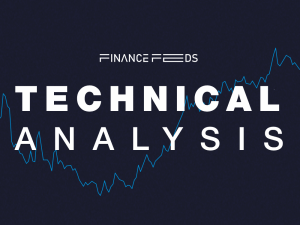Global FX Market Summary: USD, FED, Middle East Tensions April 17 ,2024
The Federal Reserve walks a delicate line, addressing high inflation through a hawkish stance while avoiding stifling economic growth.

Federal Reserve Tightrope Walk: Inflation vs. Growth
The Federal Reserve (Fed) is currently caught in a delicate balancing act. On one hand, they are battling persistently high inflation, which is currently well above their target of 2%. This has led them to adopt a hawkish monetary policy stance, which includes raising interest rates and reducing the money supply. Higher interest rates make it more expensive for businesses and consumers to borrow money, which can slow down economic activity and eventually bring down inflation.
However, the Fed is also mindful of the potential negative consequences of raising rates too aggressively. A sharp slowdown in economic growth could lead to a recession, which would be even more damaging than inflation. The recent strength of the US labor market, with low unemployment and rising wages, is another factor the Fed needs to consider. While these are positive signs for the economy, they can also contribute to inflationary pressures.
Middle East Tensions: A Tug-of-War in the Markets
The recent escalation of tensions in the Middle East, triggered by the Israeli airstrike on Iran and the preceding drone attack by Iran, has injected a dose of risk aversion into the market. Investors tend to flock to safe-haven assets like gold and the Japanese Yen (JPY) during times of uncertainty. This is because these assets are perceived as less risky than stocks or other currencies.
The initial reaction to the news of the Israeli airstrike was a surge in the price of gold and the JPY. However, as tensions seem to be easing, with Iran downplaying the attack and showing no intention of immediate retaliation, the market sentiment is turning more positive. This has led to a pullback in gold prices and a slight weakening of the JPY.
Central Banks Dancing to Different Tunes: Diverging Monetary Policy
Central banks around the world are facing a similar challenge of balancing inflation and growth. However, their responses are likely to differ depending on their unique economic circumstances. The Fed, as discussed earlier, is expected to maintain a relatively hawkish stance due to persistent inflation and a strong labor market.
In contrast, some other central banks, like the Bank of England (BoE), might consider rate cuts sooner. The report mentions comments from BoE policymaker Megan Greene who acknowledged that wage growth and services inflation are not consistent with their 2% inflation target. This suggests that the BoE might be leaning towards easing monetary policy to stimulate economic growth, even though inflation remains above target.
Here are some economic highlights for next week:
- **PBoC Interest Rate Decision (04/22/2024 01:15:00)**:
– The People’s Bank of China (PBoC) sets its benchmark interest rate, which has a significant impact on China’s economy. Changes in interest rates influence borrowing costs, investment decisions, and overall economic growth in China, thereby affecting global markets due to China’s importance in the world economy.
- **HCOB Composite PMI (04/23/2024 07:30:00)**:
– The High Council of German Business (HCOB) releases the Composite Purchasing Managers’ Index (PMI), which measures the performance of the manufacturing and services sectors in Germany. As Germany is the largest economy in the Eurozone, its PMI data provides crucial insights into the health of the Eurozone economy and influences investor sentiment towards the euro.
- **S&P Global/CIPS Composite PMI (04/23/2024 08:30:00)**:
– The S&P Global/CIPS Composite PMI for the UK indicates the overall economic health of the United Kingdom by combining manufacturing and services sector data. A higher-than-expected PMI suggests economic expansion, potentially strengthening the pound sterling, while a lower-than-expected PMI indicates economic contraction, which could weaken the currency.
- **Tokyo Consumer Price Index (YoY) (04/25/2024 23:30:00)**:
– The Tokyo Consumer Price Index (CPI) measures changes in the price level of a basket of goods and services purchased by households in Tokyo, Japan, compared to the same period a year ago. It serves as a leading indicator of inflationary pressures in Japan and influences monetary policy decisions by the Bank of Japan (BoJ).
- **Consumer Price Index (QoQ) (04/24/2024 01:30:00)**:
– The Consumer Price Index (CPI) for Australia measures changes in the average price level of a basket of goods and services purchased by households in Australia. It provides insights into inflationary trends, which impact monetary policy decisions by the Reserve Bank of Australia (RBA) and investor expectations regarding interest rates.
- **BoJ Interest Rate Decision (04/26/2024 03:00:00)**:
– The Bank of Japan (BoJ) announces its decision on the overnight interest rate, which is a key monetary policy tool used to stimulate or cool down the Japanese economy. Changes in interest rates affect borrowing costs, investment, and currency value, making this announcement highly influential for the yen and global financial markets.
- **Gross Domestic Product Annualized (04/25/2024 12:30:00)**:
– Gross Domestic Product (GDP) Annualized measures the annualized change in the inflation-adjusted value of all goods and services produced by the economy. It provides a comprehensive overview of economic growth or contraction, guiding investors and policymakers on the state of the US economy and influencing financial markets.
- **SNB’s Chairman Jordan Speech (04/26/2024 08:00:00)**:
– The Swiss National Bank (SNB) Chairman’s speech offers insights into Switzerland’s monetary policy stance, including interest rate decisions, currency interventions, and economic outlook. As Switzerland is a major financial hub, the SNB’s actions and statements can impact the Swiss franc and global currency markets.
- **Core Personal Consumption Expenditures – Price Index (MoM) (04/26/2024 12:30:00)**:
– The Core Personal Consumption Expenditures (PCE) Price Index measures changes in prices paid by consumers for goods and services, excluding food and energy, on a month-over-month basis. It is the Federal Reserve’s preferred inflation gauge and influences monetary policy decisions, particularly regarding interest rates.
- **Michigan Consumer Sentiment Index (04/26/2024 14:00:00)**:
– The University of Michigan’s Consumer Sentiment Index measures consumers’ confidence in the US economy through surveys on their economic expectations and spending intentions. It serves as a leading indicator of consumer spending, which drives a significant portion of economic activity in the United States, impacting financial markets.
The subject matter and the content of this article are solely the views of the author. FinanceFeeds does not bear any legal responsibility for the content of this article and they do not reflect the viewpoint of FinanceFeeds or its editorial staff.
The information does not constitute advice or a recommendation on any course of action and does not take into account your personal circumstances, financial situation, or individual needs. We strongly recommend you seek independent professional advice or conduct your own independent research before acting upon any information contained in this article.









